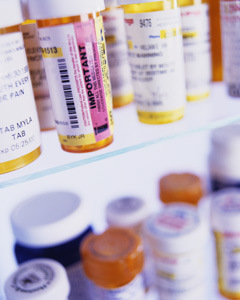Many of us know that mixing medications with alcohol is something that shouldn’t be done, and that goes for both prescription and over-the-counter meds. But it isn’t always clear why this is, and what dangers it poses. And often the warning is overlooked or underestimated. But lets take quick look at some numbers from the National Institute on Alcohol Abuse and Alcoholism:
- 70 percent of adults consume alcohol at least occasionally with more than 10 percent consuming it on a daily basis
- 14 billion prescriptions are written by doctors annually for the 2,800 prescription drugs on the market (as well as 2,000 types of over-the-counter medications)
With these figures, the chance of at some point using alcohol and medication at the same time seems nearly inevitable.
So what other risks are involved in combining alcohol and medication? For example, why shouldn’t you mix Tylenol or other forms of acetaminophen with alcohol? Because high, continuous levels of alcohol activate an enzyme that metabolizes this medication into compounds that impair liver function. The combination also increases the risk of gastric bleeding. This is especially true for older adults.
Mixing alcohol with certain antibiotics not only can weaken the effect of the antibiotic or cause adverse effects, but lead to headaches, nausea, vomiting and even convulsions. Alcohol decreases the effectiveness of common medications, such as Inderal, used to control blood pressure; it may also lead to dizziness of fainting. In addition, chronic alcohol consumption increases the risk of liver damage from surgical anesthetics such as Ethrane and Fluothane.
Combining alcohol with allergy or cold medications increases drowsiness and dizziness, especially in older adults. And products with diphenhydramine, such as Benadryl, can be increasingly more sedative. Some antipsychotic drugs, such as Thorazine, can lead to “fatal breathing difficulties” (according to the NIAAA) with mixed with alcohol. And the anti-seizure drug, Dilantin, may not control epileptic seizures as effectively if alcohol is involved.
Most people know that it is extremely risky to drink while taking prescription sedatives, opiates and other painkillers, as well as anti-anxiety medication like Xanax or Valium, but it is important to reiterate. This particular combination can be fatal, causing many to stop breathing, permanently.
With prescription drugs, alcohol can have a direct effect on a drug’s availability and its effectiveness. A night of drinking can increase a drug’s availability by competing for the same set of metabolizing enzymes. Hence, increasing the risks of harmful side effects. Long-term, heavy or chronic drinking can cause the opposite situation by decreasing a drug’s availability and effectiveness by activating metabolizing enzymes (sometimes even without the direct use of alcohol).






